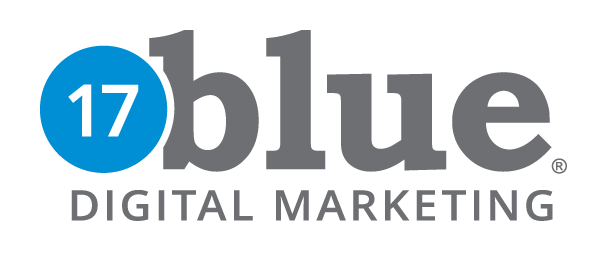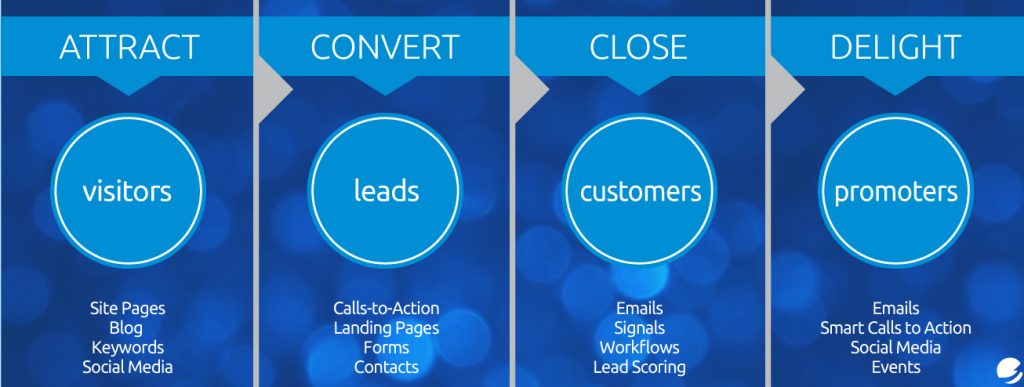We’ve found that hard-working business people don’t have time to learn complicated jargon. And really, who does? So next time your marketing department or agency starts talking about a shiny new campaign, and they haul out that crazy, sometimes technical marketing lingo… you can show up and show off.
We’ve put the “Top 20 Terms” in a reference glossary for you! After a stroll down this page, you can hold your own in that next meeting! Go ahead, bookmark it… We won’t tell. 🙂
20 Marketing Terms You Need for Business
Analytics
In essence, analytics are the reports that help you find patterns and trends in data. They can be numerical or visual (charts, graphs, etc). For the purposes of inbound marketing, analytics involves looking at data for website visitors, lead conversions, social interactions, PPC, and more. Trends and insights are utilized to make informed adjustments to marketing efforts and budgets to yield optimal results.
Business Blogging
A blog consists of regular articles, photos, videos and other content. Blogging is significant to inbound marketing because it can increase website traffic growth, thought leadership, and lead generation. A business blog is simply focused on specific marketing strategy. Posts are specific, optimized with keywords and intended to provide helpful, educational content to the business’ target audience. Business blogs should also include Calls-to-Action (CTAs) for readers to opt in and download offers.
Buyer’s Journey
The buyer’s journey is the active process a buyer goes through when making a purchase. The stages are often labeled as: awareness stage, consideration stage, and decision stage. 
Call-to-Action
A call to action is some form of link (text, image, or button) that provides a viewer with the opportunity to visit a landing page. Many times CTAs are worded as “Download our eBook” or “Get a Free Copy of…” Inbound marketers care about CTAs because they help visitors become leads. Having an offer that is valuable and relevant to a visitor is important to increase lead conversion rates. The better your CTA, the higher your chances of a conversion and ultimately a profitable relationship.
Conversion Path
A conversion path is a series of website-based events that take a visitor through the process of becoming a lead. In it’s simplest form, a conversion path will consist of a call-to-action (a link that describes an offer) that opens a landing page with a simple lead-capture form, which when completed takes the user to a thank you page where they receive the content offered. This is a transactional exchange – you give the user helpful content as promised in exchange for their information.
Content
For inbound marketing, content is a piece of information to be read or viewed, and shared. Content can be a blog, a video, a photo, slideshows, audio files or social posts. Content is the foundation for inbound marketing success. After all, clicking through to a site and NOT finding what you want is frustrating, right? So dial it in (see personas).
Inbound Marketing
Old “outbound” marketing models involved buying lots of ads, buying email lists (YIKES!) and hoping that somehow all that spending got a few solid leads. Inbound marketing is the result of the empowered consumer flipping that model on it’s ear. Instead of blasting messages to interrupt prospect’s lives, inbound focuses on attracting those who are interested and looking for information related to your product or service. These are the prospects who have the highest potential to become buyers. The process involves: attracting, converting, closing and delighting your customers:
Learn a little more about Inbound Marketing.
Keyword
Keywords are topics and phrases that help search engines match the relevance of webpages to the inquiry of searchers (people). Since engines like Google, Yahoo, Bing and YouTube are working to give users great experiences, they are looking for quality content with high relevancy.
If you’re site doesn’t have high search/rank authority, start by identifying keywords that have significant search volume but are not too difficult to rank for. Make sure they are fitting for your buyer and then use them to optimize your pages. On-page and off-page SEO matter, so check them out in the “O” section!
Landing Page
Like US Marines hitting a beach, your landing (pages) are strategic and critically important for lead generation! Your landing page is designed to provide a valuable marketing offer… that offer might be an ebook, whitepaper or webinar, for example. The visitor is asked to exchange some information for the offer. This information exchange is the beginning of the conversion process. It identifies a lead from other visitors.
Having a variety of landing pages that appeal to different buyer personas at each of the stages of the buyer’s journey dramatically increases the relevance and effectiveness of marketing content offers.
Lead Nurturing
Lead nurturing is the process of communicating with a lead over time (usually through timed and personalized emails, social messages, etc) to engage and qualify them. Sometimes called “drip marketing,” lead nurturing helps a potential buyer move through the sales funnel or sales process. Delivering the right content at the right time, helps a lead to remain engaged and take next steps through the buying stages.
On-Page Optimization
This form of SEO involves only what is ON the actual webpage. Items like page title, H1 tags, page content, and image alt tags all work together to help establish what the page is about. Keeping these elements focused on the desired keyword phrase for the page helps it be easily identified and will help it’s page rank for that particular search phrase.
Off-Page Optimization
As you might expect, off-page SEO refers to things that happen OFF the actual webpage. These factors can be influenced by you, but not completely controlled. Why? Because they live on someone else’s turf (other sites/domains). Domains that link to your page, social media activity, and other off-page factors are very powerful in affecting search. The best way to impact these areas is to provide remarkable content that is useful and relevant to the reader… the kind of content people will want to share and link to.
Persona
A buyer persona is a profile of your target (or ideal) consumer. Yes, go NCIS for a moment… if you want to be successful in inbound marketing, you must be an accurate profiler. Your customer’s behavior, interests, demographics and thinking determine how you can best reach them, where they will be “hanging out” online looking for information, and how you should talk to them. A good inbound marketer knows that the better they define their target, the better their marketing decisions (and results) will be.
PPC
PPC, (or Pay-Per-Click) is a paid advertising method where an advertiser places ads in a particular advertising site or system (Google AdWords or Facebook, for example). The advertiser pays each time a visitor CLICKS the ad. Yeah, it’s pretty self-explanatory.
Responsive Design
Responsive design is the savvy and more sophisticated sister of yesterday’s mobile site. Instead of building a “regular” site, and then building a “mobile” site… a responsive site works on devices of all types and sizes. It actually responds to the size of the device screen and adjusts to display images, titles and text at appropriate and readable sizes.
Social Media
Social media is designed to be shared through social interaction on platforms like Facebook, Twitter, Google+, LinkedIn, YouTube and others. Today social media networks are actively used for personal and business purposes. Each social network has it’s own demographics, tone, and expected behavior. Social Media is important to inbound because it provides channels to increase reach and help attain business goals.
Testing – “A/B Testing”
Landing pages, forms, CTAs, ads, social posts, email marketing… almost any form of marketing can be tested and improved. A/B testing allows marketers to compare two versions of a marketing element with ONE variable altered. It might be a title, an image, or a form field, but it’s important that one variable be tested in isolation to ensure valid data is retrieved and the best-performing option is used in further marketing.
URL
This is short for Uniform Resource Locator, but most folks just call it a domain or link. Your website’s principal domain (URL) is the base you want all your content to reside on. it probably looks something like ours (www.byhisdesign.com) But each page, document, blog or other “resource” has it’s own URL – for example, this blog article is sitting here: www.byhisdesign.com/blog/20-marketing-terms-you-need-for business/
URLs are important for on-page SEO. While you don’t want to name your site www.jacksonvilleNCmarketingblogforbusinessestolearnaboutinboundmarketing.com (that would be sad and hard for people to remember) If a keyword you’re wanting to get indexed for is in the URL, it might give a little extra help. Note the red terms below:
www.byhisdesign.com/blog/20-marketing-terms-you-need-for-business/.
Website
You’re on one right now. It’s a connected, branded collection of pages and information by a person, business, or group. Often there is a home page, product or services pages, a contact page, a blog, or photo galleries… It depends on the audience and purpose of the site. An inbound marketing plans a website to attract visitors that are relevant to the site’s purpose and convert them into leads… then customers.
Workflow
A workflow is a lead nurturing campaign. It’s a planned set of actions (triggers) and events that move (or nurture) a lead through the buyer’s journey. A workflow can also be used to update contacts or perform other key functions. Workflows are important to inbound marketing because they are the path along which a lead or user travels to accomplish a goal.
Well, there’s your cheat sheet for the top 20 marketing terms we think business owners should know. Just think of it like we’ve copied our notes for the day you missed class. Sure, some of it may seem a little new, but now you’ve got a resource in your pocket. You’re not winging it alone!
Did we forget a term you’d like defined? Let us know.






